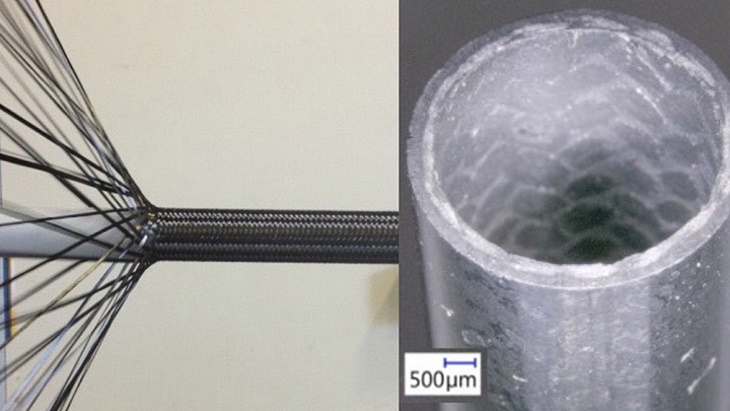GA-EMS is near completion of a 30-month contract with the US Department of Energy (DOE) to deliver individual models for nuclear-grade SiGA materials to form the basis of a future digital twin. This is a modelling and simulation capability intended to help accelerate the process of nuclear fuel qualification and licensing for current and next generation reactor materials.
SiGA is a silicon carbide (SiC) composite material which, because of its hardness and ability to withstand extremely high temperatures, has been used for industrial purposes for decades. It now forms the basis for the development of nuclear reactor fuel rods that can survive temperatures far beyond that of current materials, such as zirconium alloy.
GA-EMS said the four individual physics-informed models it has developed capture the complex mechanical response of SiGA cladding while exposed to irradiation. A multi-scale modelling approach was taken where each individual model covers a different length scale – from a mechanism-based microscale model to a reactor system level model. In future work, these individual models will be combined into one integrated model called a digital twin.
"A digital twin is a virtual representation of a physical object or system - in this case our SiGA cladding nuclear fuel system," said GA-EMS President Scott Forney. "When complete, this digital twin will allow us to predict SiGA performance within a nuclear reactor core, reducing fuel development and testing costs and reducing the time it will take to get regulatory approval for this revolutionary technology, without sacrificing safety."
"We have been able to expedite development and verification of the individual models by leveraging the expertise at Los Alamos National Laboratory and Idaho National Laboratory," said Christina Back, vice president of GA-EMS Nuclear Technologies and Materials. "Our work integrally involves dedicated laboratory testing as we develop each performance model. We look forward to continuing to the next phase to bring these individual models together and incorporate them into a greater digital twin framework. Utilisation of the framework to apply the separate effects models appropriately will bring a new level of sophistication and accuracy to efficiently predict fuel performance."

SiGA woven silicon carbide nuclear fuel cladding (Image: GA)
GA-EMS has successfully created silicon carbide nuclear fuel cladding tubes. The company's technology incorporates silicon carbide fibre into its cladding. The combination creates an incredibly tough and durable engineered silicon carbide composite material which can withstand temperatures up to 3800°F (2093°C) - about 500 degrees hotter than the melting point of zirconium alloy.
In July, General Atomics announced it had manufactured the first batch of full-length 12-foot (3.6m) SiGA silicon carbide composite tubes designed for pressurised water reactors. It had previously created 6-inch (15cm) long SiGA rodlets and 3-foot (91cm) cladding samples that meet stringent nuclear power reactor-grade requirements and will undergo irradiation testing at DOE's Idaho National Laboratory.
GA originally developed its SiGA composite for its Energy Multiplier Module (EM2) small modular reactor design. This is a modified version of its Gas-Turbine Modular Helium Reactor (GT-MHR) design.
In February 2020, Framatome and GA agreed to evaluate the feasibility of using SiGA in fuel channel applications through thermomechanical and corrosion testing. The long-term goal is to demonstrate the irradiation of a full-length fuel channel in support of licensing and commercialisation.

_78185.jpg)



_30199.jpg)
_72306.jpg)

_49562.jpg)





